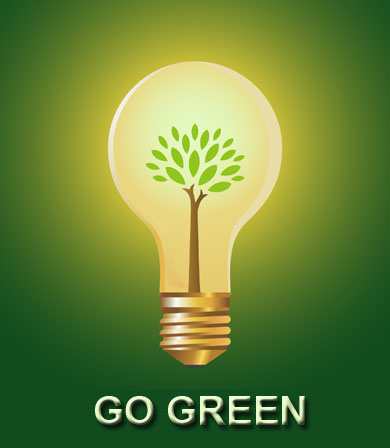One Change leads to another. When it comes to saving money and cutting your hydro bill, switching to energy efficiency light bulbs is just the start. Here are some more simple actions to help you conserve energy and save money.

Replace your old-fashioned incandescent light bulbs with energy-saving CFL and LED bulbs
Compact fluorescent light (CFL) and LED bulbs use about 75% less energy than old-fashioned incandescent light bulbs and last much longer. For every bulb you swap, you can cut greenhouse gas emissions and save money on your energy bill over the lifetime of the bulb. Click here for information on CFL recycling in North America.

Plug your electronics into power strips and shut them off when not in use
Fight what’s known as phantom or vampire power. Your computer, printer, TV, DVD player, stereo, kitchen appliances and other electronics are still sucking power while you have them shut off. In North America, 75% of the electricity used to power home electronics and appliances is consumed while the products are turned off! Switching them off with a power strip when you’re not using them will cut all power to the appliances and save you loads of money on wasted energy—as much as 15% of your monthly bill!

Stay cool with a ceiling fan
Instead of A/C consider installing an ENERGY STAR-qualified ceiling fan, which can cost as little as 10 cents a month in energy. You can even save money in the winter. Reverse the direction of your ceiling fan motor so that cool air is pushed up towards the ceiling, drawing warm air down into the room. Rather than cold floors and warm ceilings, you’ll have a more even temperature throughout the room. Now, can your air conditioner do that?

Install a programmable thermostat and lower it
Install a programmable thermostat to lower your heat when you don’t need it, for example when you’re out of the house and you could save up to $65 a year. Turning the thermostat down just 1 degree C can save you 2% on your heating bill.

Run a Full Dishwasher
By using an ENERGY STAR qualified dishwasher, running it when it’s full, and using an economy setting helps reduce the amount of hot water and energy used to clean your dishes. As much as 80% of the energy your dishwasher uses goes to heat water. So the less hot water you use to wash your dishes, the more energy and money you save. For an additional 10% energy savings, select the no-heat dry cycle (or simply open the door) to air dry your dishes.

Install low-flow showerheads and faucet aerators
Get an adequate flow for less dough! Installing low-flow showerheads and low-flow aerators on your kitchen and bathroom faucets is the single most effective water conservation action you can do for your home. Inexpensive and simple to install, low-flow shower heads and faucet aerators can reduce your home water consumption as much as 50%, and reduce your energy cost of heating the water also by as much as 50%. You likely won’t even notice a drop in water pressure—just in your water and energy bills (to the tune of over $150 a year)!

Air dry your laundry
Did you know that your clothes dryer is the second biggest electricity-using appliance in your home (after the refrigerator)? Why not air dry your cloths on a clothesline or drying rack to save as much as $100 on your electricity bill each year.

Wash your laundry in cold water
85 – 90% of the energy used to wash your clothes is used to heat the water, so why not switch to cold to save money and energy. While you’re at it, wait until you have a full load before starting the washing machine.
Source: http://www.onechange.org

No comments:
Post a Comment